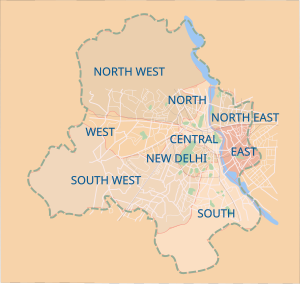Assessment of Deaths Attributable to Air Pollution: Should We Use Risk Estimates based on Time Series or on Cohort Studies? ( 6 page pdf, N. Künzli, S. Medina, R. Kaiser, P. Quénel, F. Horak, Jr., and M. Studnicka, American Journal of Epidemiology, Vol. 153, No. 11, 2001)
Today’s review looks at an analysis of the two ways of estimating the risk of death from air pollution- as an event from immediate pre-death conditions over a short time (using time series) or as a cumulative result over a lifetime using cohort groups. The authors suggest that each risk estimate has value and each has strengths and weaknesses. The analysis could be useful in suggesting what and how often to monitor and how to use the data.
 Key Quotes:
Key Quotes:
“The “frailty” concept is useful in acknowledging that, in most cases, the probability of death is influenced not by one single factor, e.g., air pollution, but rather by a function of a whole set of underlying conditions or risk factors”
“Time-series studies model the association between the probability of death and the level of air pollution shortly before the event”
“Cohort studies model the association between an
exposure and time to death. Thus, in cohort studies, time is the outcome measure of interest.. the cohort study design requires a setting with
spatial variability of long term exposure”
“several patterns of exposure may influence time to death:
- a single exposure occurring once in the past over a short period of time (e.g., an accidental spill);
- repeated exposures of short duration;
- continuous exposure over a longer period of time;
- a pattern of short term exposure just before death; or
- a combination of all of the above”
“categories of death associated with air pollution:
- air pollution increases both the risk of underlying diseases leading to frailty and the short term risk of death among the frail;
- air pollution increases the risk of chronic diseases leading to frailty but is unrelated to timing of death;
- air pollution is unrelated to risk of chronic diseases but short term exposure increases mortality among persons who are frail; and
- neither underlying chronic disease nor the event of death is related to air pollution exposure”
“we have conceptually shown that time-series based numbers of attributable cases must underestimate the total effect”
“assuming the availability of long term air pollutant monitoring data, exposure may be defined for different periods of life and for a variety of patterns (e.g., number of peaks, seasonal averages, cumulative exposure, etc.)”
“both types of air pollution mortality studies— the time-series approach and the cohort approach—are of value in air pollution epidemiology. However, they measure two different aspects of mortality that are not interchangeable”
 Image via Wikipedia
Image via Wikipedia Image via Wikipedia
Image via Wikipedia
 Image via WikipediaAre freeways doomed? -Several cities are tearing down highways, creating bold new public spaces -- and building a future without cars (Dream City, Nov. 30, 2011)
Image via WikipediaAre freeways doomed? -Several cities are tearing down highways, creating bold new public spaces -- and building a future without cars (Dream City, Nov. 30, 2011) Image via Wikipedia
Image via Wikipedia Image by Getty Images via @daylifeProposal for a Regulation on the Sound Level of Motor Vehicles (12 gage pdf, Commission Staff Working Paper- Executive Summary of the Impact Assessment, Dec. 9, 2011)
Image by Getty Images via @daylifeProposal for a Regulation on the Sound Level of Motor Vehicles (12 gage pdf, Commission Staff Working Paper- Executive Summary of the Impact Assessment, Dec. 9, 2011)

 Image via WikipediaCongestive Traffic Failure: The Case for High-Occupancy and Express Toll Lanes in Canadian Cities (9 page pdf, Benjamin Dachis, C.D. Howe Institute, Aug. 31, 2011)
Image via WikipediaCongestive Traffic Failure: The Case for High-Occupancy and Express Toll Lanes in Canadian Cities (9 page pdf, Benjamin Dachis, C.D. Howe Institute, Aug. 31, 2011)
 ]
]
 Image via Wikipedia
Image via Wikipedia



 Image via WikipediaExposure to road traffic and railway noise and associations with blood pressure and self-reported hypertension: a cohort study ( 11 page pdf, Mette Sørensen, Martin Hvidberg, Barbara Hoffmann, Zorana J Andersen, Rikke B Nordsborg, Kenneth G Lillelund, Jørgen Jakobsen, Anne Tjønneland, Kim Overvad and Ole Raaschou-Nielsen,Environmental Health, Oct. 28, 2011)
Image via WikipediaExposure to road traffic and railway noise and associations with blood pressure and self-reported hypertension: a cohort study ( 11 page pdf, Mette Sørensen, Martin Hvidberg, Barbara Hoffmann, Zorana J Andersen, Rikke B Nordsborg, Kenneth G Lillelund, Jørgen Jakobsen, Anne Tjønneland, Kim Overvad and Ole Raaschou-Nielsen,Environmental Health, Oct. 28, 2011)

 Image via WikipediaMethod to Estimate the Chronic Health Impact of Air Pollutants in U.S. Residences (29 page pdf, Logue JM, Price PN, Sherman MH, Singer BC, Environ Health Perspect, Nov.17, 2011)
Image via WikipediaMethod to Estimate the Chronic Health Impact of Air Pollutants in U.S. Residences (29 page pdf, Logue JM, Price PN, Sherman MH, Singer BC, Environ Health Perspect, Nov.17, 2011)